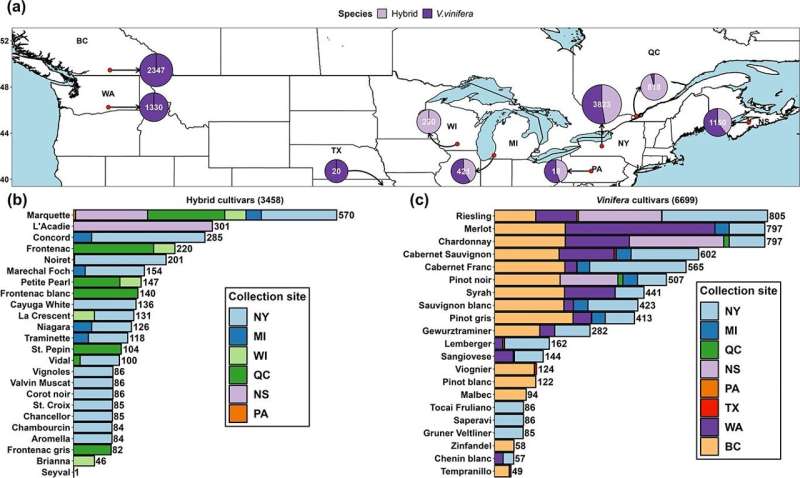Shorter winters brought on by climate change are posing a new threat to grape growers: earlier bud break exposing vines to potentially devastating spring frosts. To address this concern, researchers at Cornell University have developed a computer model that predicts freeze damage risk for various grape cultivars.
This freely available model boasts a user-friendly web interface specifically designed for growers in the Northeast. Users can select their nearest weather station from a vast network of thousands and choose from 12 different grape varieties. With this information, the model delivers a highly accurate (within a few degrees) prediction of potential freeze damage to buds.
"When a freeze event dips below a cultivar's tolerance level, the bud dies, impacting the harvest as flower tissues reside within the bud," explains Jason Londo, an associate professor involved in the project. "A dead bud translates to no grapes for that season."
The model, spearheaded by doctoral student Hongrui Wang under Londo's guidance, is based on the understanding that different grape varieties possess varying degrees of cold hardiness. This resilience follows a U-shaped curve throughout winter. Each cultivar displays peak tolerance in mid-winter, with lower tolerance at the beginning and end of the season.
For instance, Cornell-developed Cayuga White and the University of Minnesota's Marquette (red wine grape) can withstand temperatures as low as -20°F in the heart of winter. Aravelle, a recently released Riesling hybrid from Cornell AgriTech, boasts mid-winter tolerance of -7°F.
However, with rising spring temperatures, buds begin to break open, pushing out green tissue with a much higher water content. This vulnerability makes vines susceptible to frost events, with freezing occurring around 28-29°F.
To develop the model, Londo's team has been meticulously measuring cold hardiness in 12 grape varieties every week throughout winter at Cornell AgriTech in Geneva, New York, since 2009. While this data pertains to a single location, Wang's ingenious application allows users to input their local weather data and receive predictions specific to their area and chosen grape cultivar.
"This winter wasn't particularly helpful for the model's application due to the lack of significant cold spells," acknowledges Londo. "But moving forward, if a cold snap hits in March or April, growers can utilize our website and the model to assess potential damage concerns."
A damage prediction prompts further action. Growers can inspect buds using a razor blade to confirm the model's findings. Based on the severity and timing of the damage, adjustments can be made. For example, a grower who typically leaves 10 buds per vine might increase that number to 20 after a 50% freeze event to compensate for lost buds. In situations with severe damage, growers may need to adapt their entire season plan, potentially seeking crop insurance or sourcing fruit from other regions.
The Cornell team remains dedicated to ongoing efforts. They will continue monitoring grape cultivar cold hardiness annually while collaborating with partners across the Northeast and Canada to validate the model's effectiveness in various locations. Additionally, they are actively researching the genetic factors that influence cold hardiness and the potential for slowing down bud break.
"As the climate warms, bud break keeps getting earlier, but frost risk persists," concludes Londo. "Our research delves into the effects of bud freezing to develop mitigation strategies as our climate becomes increasingly unpredictable."




0 Comments